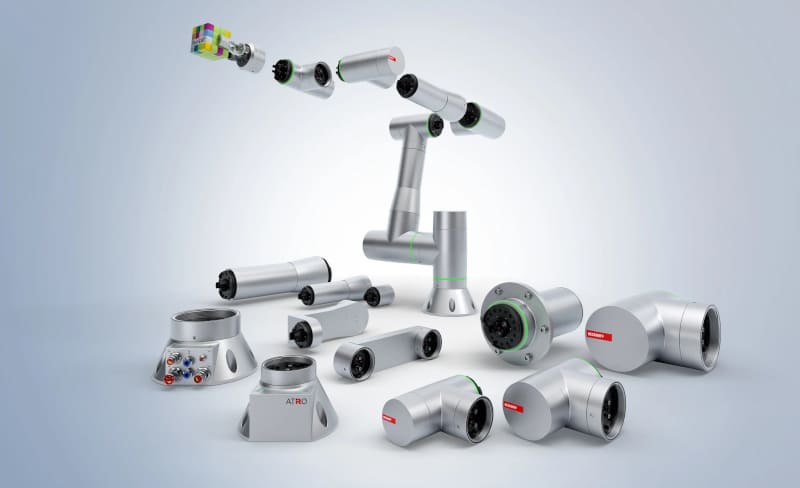The future of robotics is modular – and Beckhoff now offers the perfect solution, prepared for mass production, with ATRO (Automation Technology for Robotics). ATRO merges modularity and adaptability in an industrial robotic system featuring an internal media feed and continuous rotation across all axes, smoothly incorporated into the PC-based control system with TwinCAT. The capability to utilize the same module types in different setups aids in lowering storage expenses and decreasing the requirement for replacement components.
The ATRO modular industrial robot system enables the creation of optimal robot setups tailored to various assembly and handling tasks in a personalized and adaptable manner. Standardized motor modules featuring built-in drive capability, along with link modules available in multiple designs and lengths, enable nearly endless mechanical combinations. Complete integration with TwinCAT, the extensive Beckhoff control platform, also grants immediate access to a variety of established automation features – encompassing everything from machine control, robot control, safety, vision, condition monitoring, to links with edge devices or cloud systems.
The end-to-end modularity of the ATRO system – both in its hardware modules and software for configuration, programming, operation, and safety monitoring – opens up a whole new level of flexibility. A six-axis articulated robot is not always the right tool for the job. In many pick-and-place scenarios, just three or four degrees of freedom are enough, which means fewer axes, lower costs, and reduced weight – and these weight savings can then be used to offset a higher payload. The same ATRO motor and link modules can also be used to create a wide variety of exciting kinematic designs that go beyond the options provided by traditional robot systems.
The European harmonized standards DIN EN ISO 10218-1 and DIN EN ISO 10218-2 apply to the safety of industrial robots. New versions of these standards were published in early 2025 and will soon take effect once harmonization is complete. As of the end of the transition period (expected in 2027), they will apply to all industrial robots that are new on the market. If a machine builder integrates a customized ATRO kinematic system into their machine, they must meet the requirements of ISO 10218-2 for the robotic portion of the application. In addition to the hardware modules for the kinematics, the ATRO system also offers software modules that – in combination with pre-checked safety templates – meet precisely these requirements.

